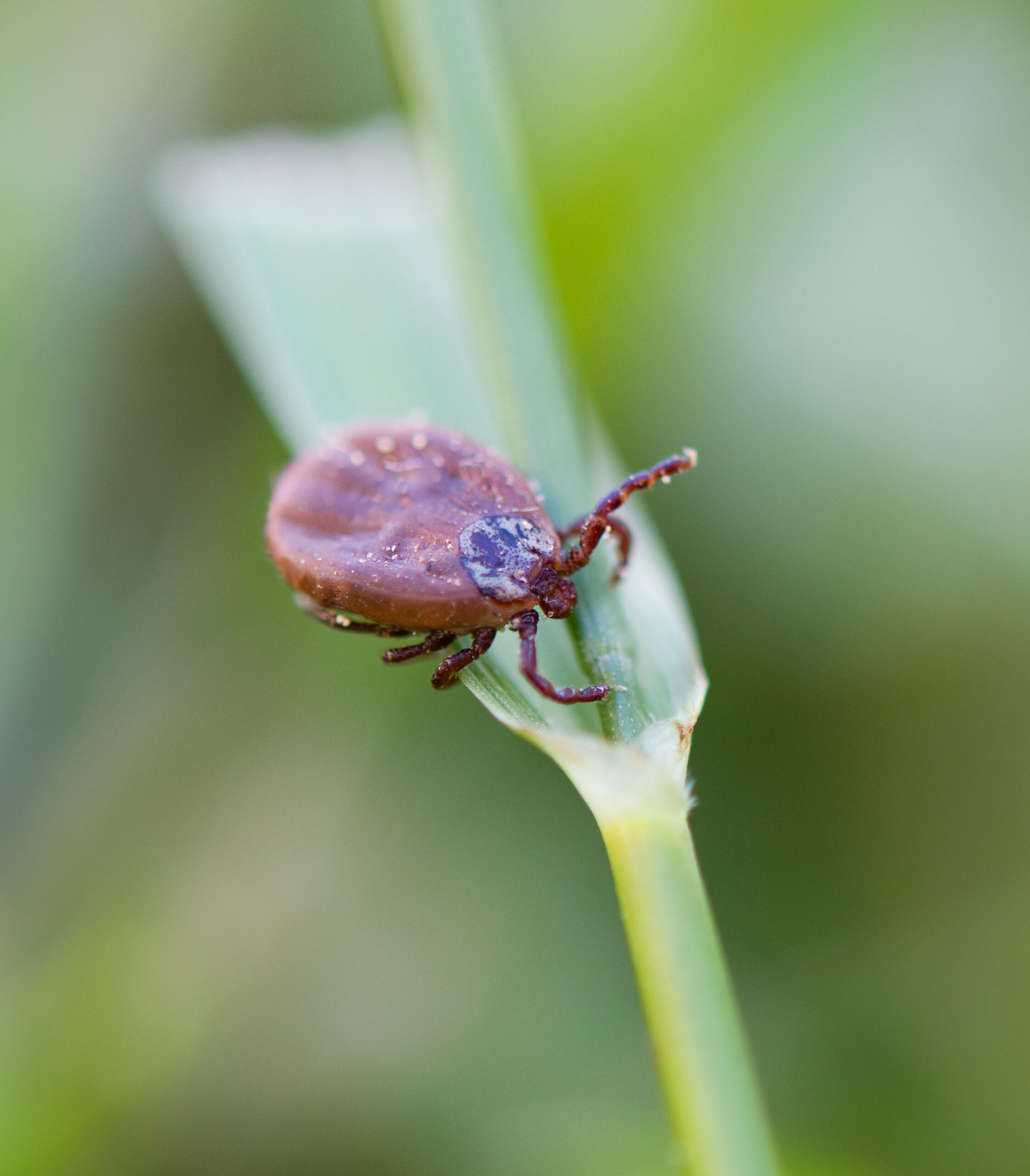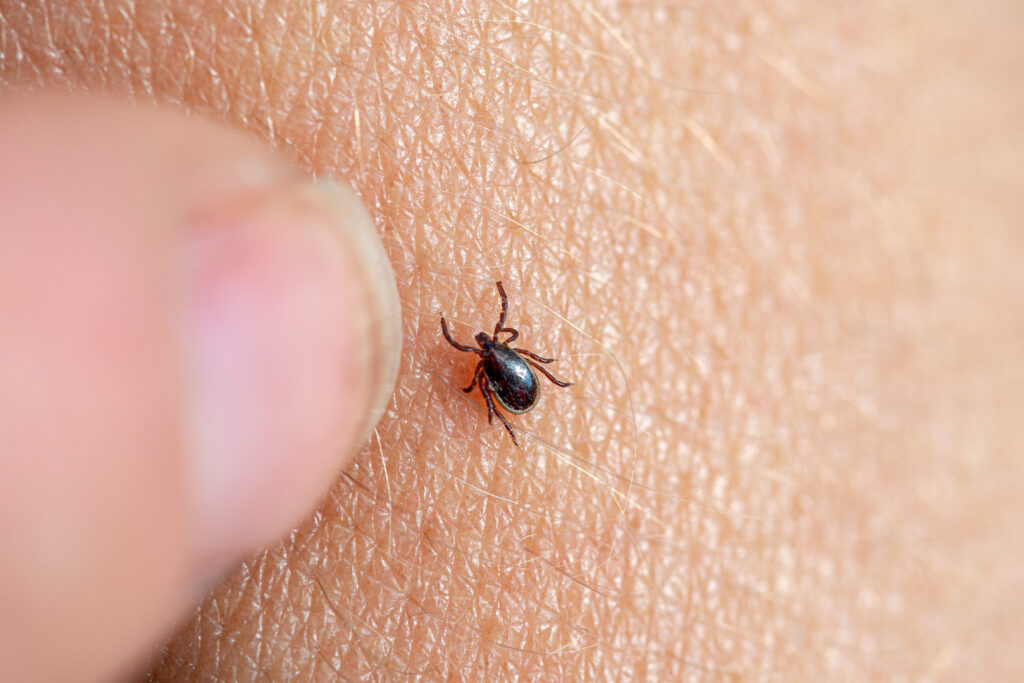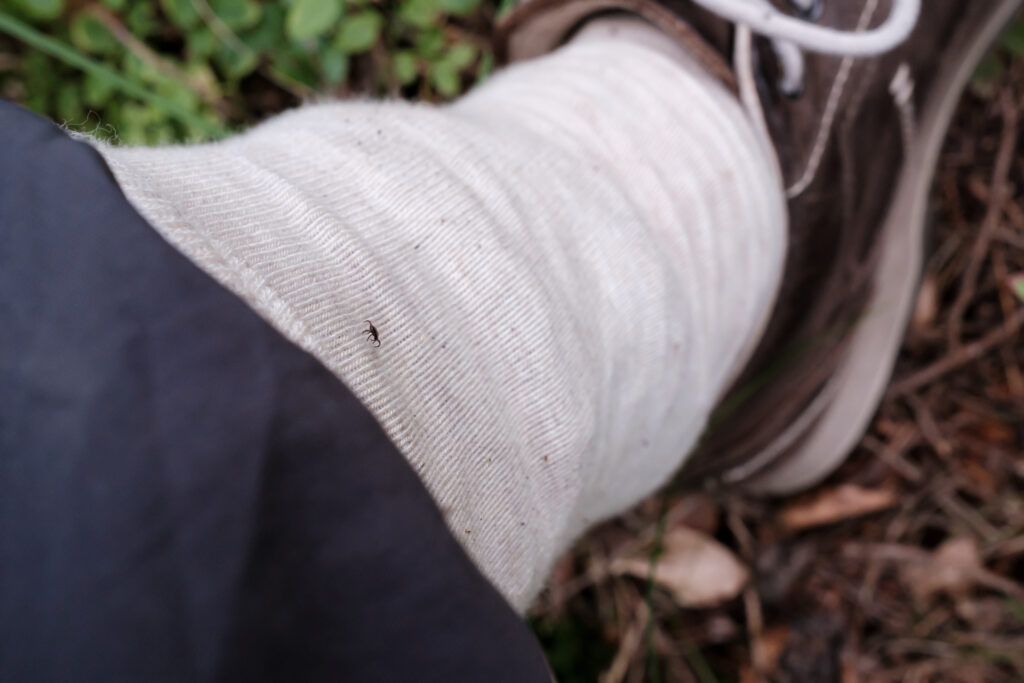
Lyme disease is a bacterial infection passed to humans through the bite of an infected tick. Blacklegged ticks, also known as deer ticks can carry a bacterium called Borrelia burgdorferi. When an infected tick bites a human, it can pass the bacteria to humans and cause Lyme disease.
Transmission of Lyme disease
An estimated 300,000 people in the U.S. get Lyme disease every year. The disease is more prevalent in the northeastern and the upper midwestern states. Humans get Lyme disease when they get bit by infected blacklegged ticks, often after visits to wooded areas or areas with long grasses.
Most ticked bites are seen between spring and fall when the insect is most active. The females lay eggs in early spring, the eggs hatch into larvae which grow into nymphs, which then grow into adults. All life stages except the eggs bite and transmit Lyme disease. The larvae and nymphs are considered particularly dangerous because they are as small as a poppy seed and not highly pigmented, making them hard to spot on the skin. The adults are about the size of a sesame seed and are easier to spot. There may not be any scratchiness in response to a tick bite. People may not be aware that they have been bitten by a tick.
Infection with Borrelia burgdorferi through a tick takes time. The tick must be attached to the skin for 36-48 hours to pass enough bacteria to cause Lyme disease. Generally, if the tick is removed within 24 hours of attaching, the chances of getting Lyme disease are reduced.

Symptoms and stages of Lyme disease
After getting bit by an infected tick (or ticks), the first symptoms of Lyme disease can show up in 3-30 days.
Typical symptoms include:
- Fever
- Headache
- Fatigue
- A chacateristic rash called erythema migrans. This rash starts small and can expand to 12 inches or more and sometimes looks like a bullseye with a darker center and an outer ring around it. The rash is seen in about 70-80% of tick bites, so not everyone bit by a tick develops this rash. The rash can disappear and later reappear and is rarely painful or itchy.
A course of antibiotics can clear out the infection, especially when it is started as soon as the rash or other symptoms of the infection are detected. If not treated, the infection can spread to other areas of the body such as the heart, the joints, or the nervous system. After weeks or months of worsening Lyme disease, the following symptoms may be seen:
- Severe headache
- Stiffness in the neck
- Arthritis with pain and swelling of joints such as in the knees
- Irregular heartbeat
- Heart palpitations
- Nerve pain or shooting pains or numbness in hands or feet
- Dizziness
- Inflammation of the spinal cord or brain
- Loss of muscle tone in the face (facial palsy or facial paralysis)
Some people report what is called Post-Treatment Lyme Disease Syndrome (PTLDS) or Post-Lyme disease syndrome. According to some estimates, 10% of people who get Lyme disease develop PTLDS. It is a poorly understood condition that occurs when someone does not get fully better 6 months or more after the course of antibiotics. Symptoms include pain, fatigue, or difficulty thinking.
Treatment of Lyme disease
Lyme disease is treated by a course of antibiotics usually lasting 2 weeks. The sooner the antibiotics are started, the lesser the chance of getting PTLDS. The CDC does not recommend starting a course of antibiotics if you have just been bit by a tick but encourages you to speak to your healthcare provider. In a tick-prone area with known cases of Lyme disease, and depending on your medical history, a healthcare provider may choose to give you a single dose of an antibiotic to prevent Lyme disease.
PTLDS is not fully understood. It is not known if it is caused by persistent low-level infection, autoimmune reactions lingering after the first infection, or an unrelated infection. While scientists and researchers are encouraged to learn more about it, there are currently no official recommendations or treatment plans for PTLDS.

Prevention of tick bites
When you spend time outdoors during the spring and summer, you and your pets can get exposed to ticks.
Some prevention measures include:
- Avoiding tick habitat. Ticks cannot fly or jump, but they can crawl up grasses and bushes to wait for a passing animal (or human) they can latch on to for their next blood meal. Avoiding brushing against grasses and bushes. Walking in the middle of the trails can help avoid ticks. Deter children from playing under piles of dead leaves.
- Wearing protective gear. Wearing long-sleeved shirts, pants, shoes, and socks can reduce the area on your skin that ticks can latch on to. The EPA even suggests pulling your pants over your shirt and socks over your pants to close gaps and reduce access to ticks. You can also treat your clothes, shoes, and camping equipment with products containing 0.5% permethrin, or purchase permethrin-treated clothes for hiking. Permethrin quickly kills or incapacitates ticks.
- Shower after coming home. After being in the wilderness, take a shower. Showering is shown to take any unattached ticks off your body. Wash the clothes you wore to remove ticks from them.
- Inspect your body for ticks. Using a mirror, check your whole body for attached ticks. Remember that they can be very small. Pay special attention to these areas– under the arms, between the legs, back of the knees, around the waist, in the belly button, and in and around the hair and ears.
- Check your children and pets too. Kids can be more adventurous in the wilderness brushing against grass and playing with dead leaves. They are also lower, so a tick has a good chance to latch on around their faces, hair or neck (areas typically not covered by clothing). Shower them and check them for ticks. Wash and check your pets too. You can ask your veterinarian for tick-repellent products for pets.
- Keep your yard clean and use insect repellant. Keep grass cut and remove dead leaves to avoid giving a habitat to ticks. Insect repellants such as DEET can also repel ticks.
The information provided in our blog posts is for informational purposes only and is not intended as a substitute for professional medical advice, diagnosis, or treatment. Always seek the advice of your physician or other qualified health provider with any questions you may have regarding a medical condition. Never disregard professional medical advice or delay in seeking it because of something you have read on this blog.






